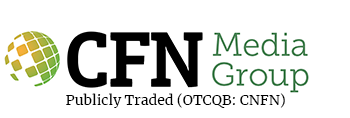
Indigenous peoples across South America have used coca leaves for thousands of years to boost energy and resolve health ailments – in fact, it remains one of the most commonly used medicines in some areas of Bolivia and Peru. But recently, Western countries are starting to rediscover coca’s potential as the next big superfood.
Power Leaves CEO, Pat McCutcheon, discusses the history of coca and uses
Let’s take a look at the history of coca prohibition and why renewed interest could create an opportunity for investors.
A Brief History
Vin Mariani became the first mass-market coca product in the 1860s, as a coca-infused Bordeaux containing 7.2mg of cocaine per ounce. A quarter-century later, temperance legislation encouraged John Smith Pemberton to remove the wine and create Coca-Cola as a non-alcoholic coca-infused “temperance drink” that still contains decocainized coca today.
Unfortunately, cocaine abuse and demonization became widespread in the 1900s. Many workplaces supplied the substance to workers to increase productivity, prompting adverse health consequences from high levels of consumption. Meanwhile, the growing public fear of cocaine prompted legislation to limit its recreational use.
The federal government initially instituted a national labeling requirement for cocaine and cocaine-containing products in the 1906 Food and Drug Act. In 1914, the Harrison Narcotics Tax Act instituted a regulatory and licensing regime for cocaine and other narcotics. And then, in 1922, the Jones-Miller Act effectively banned the drug in the U.S.
Regulatory Stance
Raw cocaine-containing coca leaves are illegal in the U.S., but decocainized coca is legal and generally recognized as safe by the Food and Drug Administration (FDA). In fact, Coca-Cola still imports decocainized coca for its beverages, which still use coca and kola nuts as its iconic core ingredients.
Decocainized coca is legal in the U.S., and there’s some evidence it could be helpful for everything from decreasing appetite to improving endurance. As a result, many food and beverage companies could seek it out as the next “superfood.”
Decocainized coca is also an exceptional organic fertilizer, helping boost yield by up to 30% versus conventional biofertilizers. With the high cost of urea, chemicals, and gas, coca leaves could become a low-cost alternative that’s highly available thanks to a robust supply chain. And as a $200 billion market, there’s a significant opportunity.
Unfortunately, until recently, it has been very challenging to import decocainized coca leaves because there’s been only one company with an import license – a Peruvian state-owned business called Stepan. The Stepan Company sells more than $70 million in specialty products, including Coca-Cola flavor, translating to a significant market opportunity.
A Unique Opportunity
Power Leaves Corp. recently became the first and only private commercial business to sign a government-approved 15-year exclusive license to extract, manufacture, and distribute decocainized coca-based products in the U.S. The company achieved this status through an exemption in the UN Single Convention on Narcotics Drug Lists.
Power Leaves is licensed with the FDA to import decocainized coca leaves. Source: Investor Presentation
The exemption grants worldwide rights to plant, transform and consume coca leaves to a small group of indigenous peoples that have done so ancestrally for thousands of years. Through its agreement with Resguardo de Calderas, the company has access to an indigenous community with significant coca leaf production capacity.
At the same time, the company is building the world’s first private and legally-approved technology to process coca leaves to remove 100% of cocaine. The mountain extraction and formulation facilities in south-central Colombia will purify, isolate, and package products containing custom, high-quality coca formulations for export to the U.S.
The company plans to initially provide bulk extract to food and beverage customers across the U.S. Soon after, the company plans to launch its organic and liquid biofertilizer products along with a coca-infused energy drink and tequila. These markets garner hundreds of billions of dollars in annual sales, translating to a significant opportunity for investors.
Finally, the company is managed by a world-class team led by CEO Pat McCutcheon. Before starting Power Leaves, he built and managed two GMP-certified pharmaceutical manufacturing facilities that exported products to seven countries. He has also worked with Tier 1-3 banks in the U.S. and Canada to raise capital and advised more than 13 companies over 6+ years.
How You Can Invest
Power Leaves Corp. plans to list on the NASDAQ over the next nine to 12 months. In the meantime, investors can participate through a private placement of up to 22,222,222 units consisting of one common share and a one-half share purchase warrant. The warrant enables holders to purchase one common share at US$0.60 for 24 months.
For more information on how to participate in the private placement, email info@powerleaves.com or sign up using the form below.
Founded in 2021, Power Leaves Corp. is breaking the monopoly on the supply of coca leaf extract and ushering in a new Age of Coca. Through an 15-year exclusive agreement with an Indigenous community, Power Leaves Corp. has developed the first-ever legal Colombian supply chain for decocainized coca extract to supply the trillion dollar global food and beverage markets. Through its established infrastructure, Power Leaves Corp. is developing and manufacturing proprietary formulations of coca extract and essence that offer an exceptional taste profile and an all-natural source of protein, nutrients, and positive health benefits. Currently, accredited investors can invest in Power Leaves Corp. through their active Reg D offering – for more information, visit www.invest.powerleaves.com or email shares@powerleaves.com.










